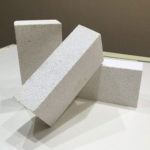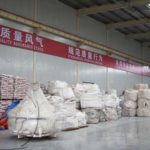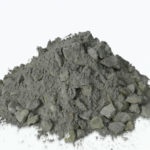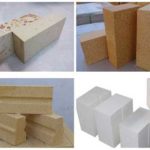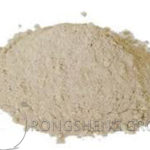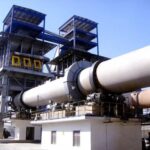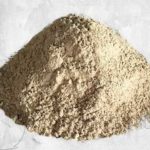Refractory plastics are classified into clay, high alumina, corundum, silicon, magnesium, chromium, zircon and silicon carbide refractory plastics according to the material of refractory aggregate. They are classified into water glass, phosphate, sulfate and organic binder refractory plastics according to the type of binder. They are classified into gas-hardening and heat-hardening refractory plastics according to the hardening method. This article introduces three types of refractory plastics needed in the process of steel metallurgy: pyrope-based plastics, mullite-based plastics and magnesium-chromium plastics.
Pyro-Gem-Based Plastic
Pyro-gem-based plastic has good anti-stripping and slag erosion resistance. It is suitable for high-temperature section furnace linings, and can be used in soaking furnaces, heating furnaces and burners. Compared with alumina-based plastics, it has the advantage of relatively low cost.
Based on the influence of heat treatment temperature on the performance of Jiaobaobao-based plastics, Jiaobaobao-based plastics with slightly lower performance than alumina-based plastics were prepared and used in the furnace top and flue of the low-temperature section of the heating furnace of a steel plant. The results of use show that the developed Jiaobaobao-based plastic has a good use effect and no damage occurs. Therefore, this pyrope-based plastic can partially replace alumina-based plastic and be applied to the low-temperature section and flue of the heating furnace. It can achieve the purpose of saving costs and reducing the unit consumption of refractory materials. However. This plastic is prone to freezing during construction in winter. If the plastic freezes, it will lose plasticity, resulting in a series of problems such as loose lining and reduced strength. Therefore, ordinary plastics have great limitations in construction in cold northern regions.
In response to this problem, an antifreeze plastic material that can be used for construction in winter was developed using charcoal and clay as the main raw materials, aluminum sulfate solution as a binder, and antifreeze liquid as an external agent. The research results show that after the antifreeze plastic material and ordinary plastic material are frozen for the same period of time, the ordinary plastic material freezes. The flexural strength and compressive strength of the antifreeze plastic material are greater than those of ordinary plastic material that has frozen. Moreover, compared with normal plastic material, the flexural strength and compressive strength of the antifreeze plastic material have not changed significantly. Therefore, this antifreeze plastic material can ensure the safety of the construction body in terms of strength at low temperatures.
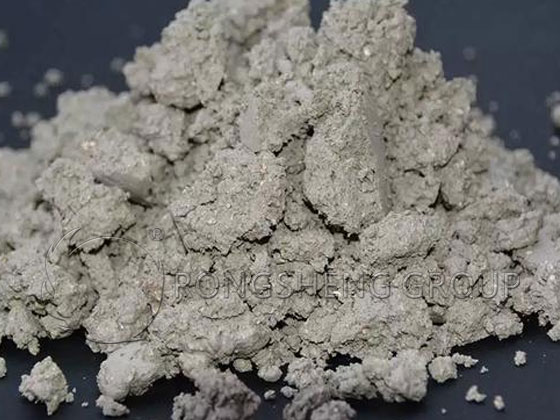
Mullite-Based Plastic
Mullite has the characteristics of high mechanical strength, low thermal expansion coefficient, good chemical stability, excellent creep resistance and high temperature performance. Therefore, the amorphous refractory material with mullite as the matrix has excellent performance. With fused mullite as the matrix, silica fume, andalusite, Guangxi white mud, SiC, α-Al2O3 micropowder, brown corundum, sodium hexametaphosphate and oxalic acid are added to prepare a hot repair plastic with mullite as the matrix. In order to ensure that the repair plastic is closely combined with the refractory knotting material in the repair crack and play the purpose of preventing the infiltration of molten steel, the repair material is required to have a certain micro-expansion, but not too large. Otherwise, it will produce negative effects. To offset the shrinkage of the plastic, three stones, namely kyanite, andalusite and sillimanite, can be introduced into the plastic. At high temperature, the expansion of kyanite is large, the expansion of sillimanite is small, and the expansion of andalusite is relatively moderate. In the prepared hot repair plastic, the addition amount of andalusite is determined to be 6-9%. In addition, the optimum amount of the binder sodium hexametaphosphate is 3%. When it is higher or lower than this value, the medium and high temperature compressive strength of the hot repair plastic varies greatly. The developed plastic was used to repair cracks in the desulfurization gun. After the repair, the plastic did not burst or crack, indicating good anti-burst performance. After a desulfurization with the desulfurization gun, it was found that the repair material did not fall off from the repaired part. It proves that the repair material has fast sintering and good adhesion.
Magnesium-Chromium Plastic
Magnesium-chromium plastic has excellent properties such as stability in vacuum, erosion resistance and corrosion resistance, so it is particularly suitable for use in RH furnaces in steel plants. Sintered magnesia, high-iron magnesia, chromite, and pre-synthesized magnesia-chromium sand are used as raw materials, and sodium hexametaphosphate and phosphate are used as composite binders to develop and prepare a new type of magnesium-chromium ramming material. The plastic has good bonding, is easy to ram, has good moisture retention, long hardening time, and is convenient for construction. After adding composite metal Al powder and Fe powder to the plastic, the medium-temperature strength of the material is improved; after adding Cr2O3, the high-temperature strength of the material is significantly improved. The developed plastic was applied to the riser and downcomer around the RH furnace of a steel plant. The results showed that the plastic has the advantages of good corrosion resistance, erosion resistance, and thermal shock resistance.
Preparation and Use of Plastic
The preparation process of plastic is: ingredients – mixing, degassing and extruding into strips – cutting or extruding into blocks, cakes or other required shapes – sealed storage – supply for use. Some also use other densification methods, such as shaking and compacting to make blocks.
Plastic does not require special technology during construction. When used to make furnace linings, take the plastic out of the sealed container, spread it between hanging bricks or hooks, and tamp it in layers (each layer is 50~70mm thick) with a mallet or air hammer. Surface processing can be performed before hardening. In order to facilitate the discharge of moisture, pores are opened at regular intervals. Finally, expansion and contraction joints are left according to the design. If used to make an integral furnace cover, it can be constructed on the bottom mold first, and then hoisted after drying.
Plastic is mainly used for various heating furnaces, soaking furnaces, annealing furnaces, carburizing furnaces, hot air furnaces, sintering furnaces, etc. It can also be used for the furnace cover of small electric arc furnaces, the burner of high-temperature furnaces and other similar parts. The use temperature mainly depends on the quality of the granular and powder materials used. Ordinary clay plastics are used at 1300-1400℃. High-quality plastics are used at 1400~1500℃. High-aluminum plastics are used at 1600~1700℃, or even higher. Chrome plastics are used at 1500~1600℃.
Leave Your Requirements on RS Kiln Refractory Bricks And Castable Materials! We Will Reply You In 12 Hours!:
